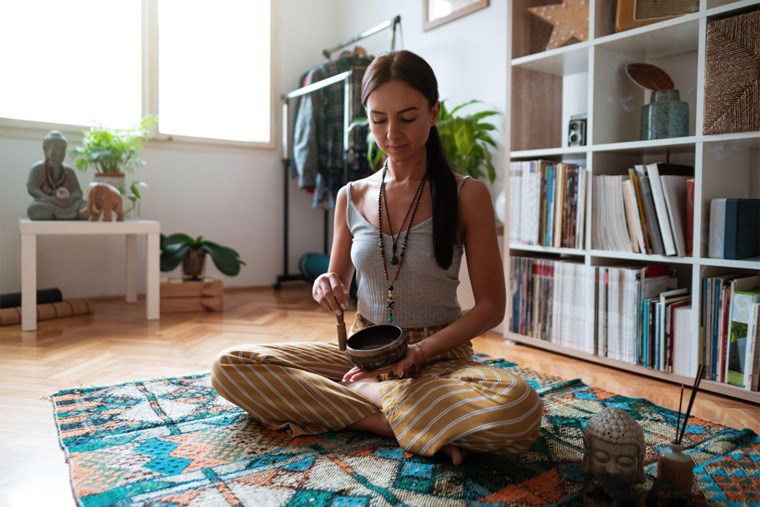Feng Shui is an ancient Chinese practice that uses energy, balance, and natural elements to bring harmony to a space or environment. Many of these elements have become a popular basis for home decorating and organizing. We spend a lot of time in our homes and ask a lot of our spaces. We want them to welcome guests—and be a restful space where we sleep and relax and a place to inspire us when we need to be productive.
Below, we explain basic Feng Shui concepts and some easy ways to create a balanced, stress-free home that meets the goals for each space.
Qi
At the heart of Feng Shui is Qi, the energy that connects all things. In Feng Shui, the goal is to allow Qi to flow through your home. This is done by:
- Designing a free path from your front door into your home.
- Keeping your home free from clutter.
- Having a minimal amount of furniture.
- Letting natural air in whenever possible.
The Five Elements
Another key component of Feng Shui is the five elements: earth, metal, water, wood, and fire. Incorporating each of these elements in your home may bring a sense of balance and harmony.
PIC
Here is a brief description of what each element adds to your home and life along with examples of how to bring each element to your house:
Earth is said to bring stability and help you and your home feel grounded. Decorate with items in earth tones (browns, greens, rusted red, grey, beige), photos of landscapes, pottery, or containers with sand, crystals, rocks or stone.
Metal is associated with beauty, joy, and efficiency, as well as focus and clarity. You can incorporate metal with furniture, planters, sculpture, frames, and even throws and pillows with silver, brass, or bronze-coloured materials.
Water assists with intuition, abundance, movement, and cleansing. Bring in these elements with black and dark blue colors, calming photos or artwork of water, aquariums or fish bowls, mirrors, objects with wavy textures, or water features like fountains.
Wood represents flexibility, growth, new life, and health. This is best incorporated with live plants, bamboo, and wood furniture, as well as green, blue, and teal colours.
Fire ignites our inspiration, passions, emotions, and action. The colour red brings in this element, as do fireplaces, candles, and lighting. Red, in particular, should be used sparingly and not in rooms where you want to create a sense of calm.
Negative Symbolism
Just like we want to fill our home with items and colours that bring a sense of peace and calm, we want to remove items that provide negative energy.
Clutter can decrease productivity and increase stress, distracting our attention and making it difficult to find things. Declutter the Feng Shui way with these tips from the author of Clear Your Clutter with Feng Shui.
Emotionally charged objects in your home cause negative energy that can lead to stress or overwhelm. This includes clutter or that gift someone gave you that you don’t like but feel bad throwing or giving away. Unfinished projects, reminders of the past, and other people’s belongings can also be emotionally charged.
Placing your bed on the same wall as the door can lead to feelings of being unsafe and blocking the flow of chi in the room. Instead, your bed should be in the commanding position as described in How To Position Your Bed For Better Sleep, According to Feng Shui.
Mirrors in the wrong places can have negative symbolism and wreak havoc on the energy in your home. According to Designer Katrina Lee, the 5 Places Not to Hang a Mirror include across from the front door where the chi will be sent right back out and in the bedroom, which can invite a third party into your room!
Are you ready to create peace and balance throughout your home with these Feng Shui ideas? Minor adjustments using these ideas and perspectives can make a huge difference in how you feel about and in your home.
 This story was made possible by our Community Partners Program. Thank you Didsbury Dental for helping to expand local news coverage in Alberta. Learn more.
This story was made possible by our Community Partners Program. Thank you Didsbury Dental for helping to expand local news coverage in Alberta. Learn more.


